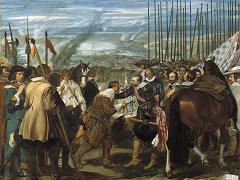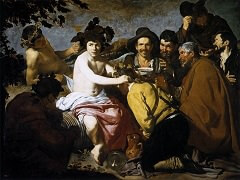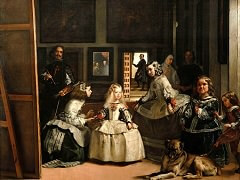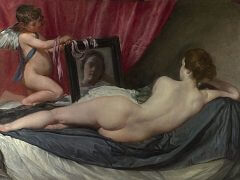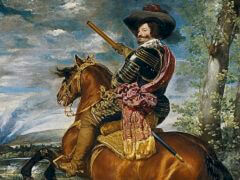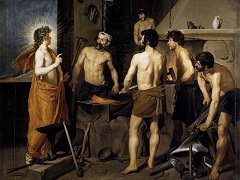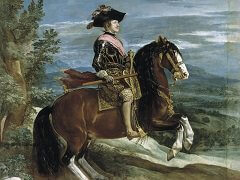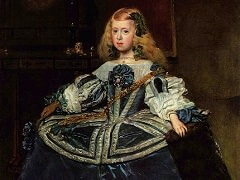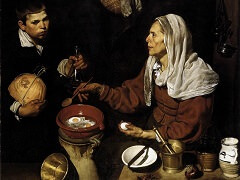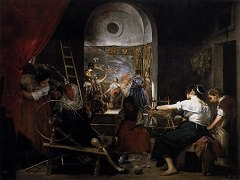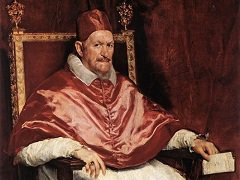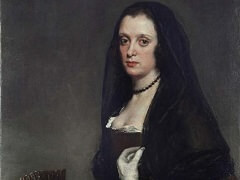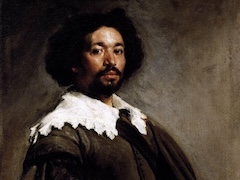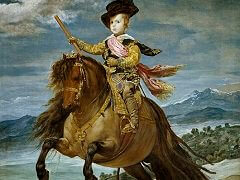The Forge of Vulcan, 1630 by Diego Velázquez

The adultery of Venus and Mars, and the consequent revenge of Vulcan, who, having captured the lovers in a net, exposed them to the jeers of the Olympians, was for centuries in literature, and by reflection in the other arts, a typically comic, sometimes farcical, motif.
Velázquez, however, portrays it in an extremely serious way; the only exaggerated element is to be found, possibly, in the wildly staring eyes of Vulcan, who has, by way of compensation, a magnificent statuesque physique. The seriousness of the subject must certainly be attributed to the classicist and idealistic influence of Roman society (Velázquez painted this picture during his stay in Rome, just after it had been commissioned by the King of Spain, no doubt because of his immediate fame. Since the complement of The Forge of Vulcan is to be found in the moving episode of "The Announcement of Joseph's Death to Jacob," it is very probable that the real theme of the two paintings is an allegory: "Deception unmasked and successful deception."
The Forge of Vulcan is based on an engraving by Tempesta of 1606, for Ovid's "Metamorphoses." The realism of the figures - nudes copied from life - and of the setting depicted with a Flemish attention to detail, is balanced by a series of cultural and figurative references of literary origin. The colour, too, full of echoes and responses, of a richness that is halfway between Honthorst and Guercino, is extraordinarily refined.
Compared with its Biblical complement, The Forge of Vulcan is, narratively speaking, even more dramatic, and certainly more personal.

